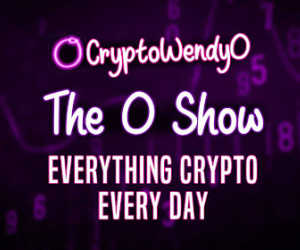With ease of access comes a new wave of innovation, but also a lower barrier-to-entry for scammers
In the last five installments of this series, we’ve been going over the evolution of NFTs, and how those initial innovations influenced the ecosystem that sprang up around them, as well as the underlying technology & standards that made them functional.
This is the “launchpad” part of the cycle: The part where all of this complicated stuff goes from a centralized place where it takes a lot of very specific knowledge in order to deploy a new project, to something a bit more open to the average person.
Really, it’s the same basic roadmap with any innovation. We talked a little bit in last week’s article about how a lot of NFT projects are repeating the same mistakes from the ICO craze; only searching for utility after they’ve already minted & spent the bulk of their ‘runway’ on everything except a reason to exist.
We’re finally starting to see the blossoming of the next phase, which is where the ‘hard’ becomes easy & problems start to find solutions. Let me go ahead & say that the rest of this article should be prefaced by a stark DO YOUR OWN RESEARCH; and possibly a quick the opinions of Shitcoin Sherpa are not necessarily those of Crypto Wendy O or the CryptoWendyO.com newsletter team.
As with anything in crypto; these are experiments. The utilities could work as intended, or they could break in a dramatic fashion & cost people a fortune. You never know. That’s half the fun, isn’t it? That said, I wanted to run through a handful of platforms which are tackling ‘ease of access’ to start your own professional-looking NFT project.
Both in an advisory capacity & in my own experiments, part of the process is nailing down all the functionality that you’ll need in order to execute from idea to mint. Let’s take a quick look at some of the options, and related costs.
Premint.xyz
Premint has been the favorite for whitelisting on Ethereum, lately. In terms of narrowing down a whitelist to only the most likely to mint, they have a lot of tools under the hood for gatekeeping whitelist access to specific groups or holders of previous collections.
The price is 1 ETH, which honestly feels like a lot, but the ‘creator key’ is considered ‘burned’ once you associate it with your account – so you can’t re-sell, but you then have access to the premium features for any list you’ve created in the future.
Last week, we discussed the cause & effect nature of project architecture and how crypto economic theory needs to be considered as part of that process. So maybe we should ask ourselves what “high price + unlimited lists” is likely to result in, as a direct consequence of that model.
The obvious answer is: scams. If you are putting 100% of your effort into making one project succeed, 1 ETH is a fairly high price. If you are making a dozen or more scams or low-effort projects; 1 ETH is a bargain. I’m not a fan of this model. Much like Twitter, there is a financial incentive to fomenting mediocrity. Twitter does not care that they have a billion bots, so long as their investors see ‘daily active users’.
Launch My NFT
I’m actually not going to link this site, for fear that someone goes there & thinks there might be a legitimate project somewhere in the rubble. Let me dash your hopes: there is not. LMNFT takes a 2.5% cut of whatever is raised, and again – there is no incentive to prevent scams. Scams make them the same 2.5% that legitimate projects do. They provide not only whitelisting, but also generative mints using art layers properly set up per their example templates.
Again, using the “cause and effect” analysis we’ve been developing while discussing crypto economic theory, let’s try & find the ‘exploit’ that turns this into a scam factory. Albeit, a fully functional, cross-chain scam factory.
The 2.5% means that, minus network fees, 97.5% of whatever you raise is yours. You just have to set up the art layers per their example folder, and they can help programmatically assemble the rest. Given that the art layers for previous successes (and failures) are widely available, you can see how easy this makes a copycat project.
So, here’s the scam: they mint up to 90% of the total, themselves. To any unwary person perusing the market, they think, “wow, this has hype!” and they probably FOMO in. The thing is, anything over 2.5% of the total is all profit, and they can release dozens of these every day.

Again, this was a bad economic model, and it provides financial incentives for both the platform & for scammers to create & push as much garbage & low-effort nonsense as possible.
Ambition
Ambition is an interesting service, in that they allow you to not only deploy a customized NFT contract, but they also allow you to create a mint site based on templates & connect the contract for that real ‘web3 mint’ feel.
The problem is, the only template is a 1:1 BAYC rip-off, or starting from scratch. It seems sort of primed to make fake BAYC & related mints, but it could get better. They also have an add-on service to pin your collection to ipfs through them, rather than hunting down a hosting service, etc.
Creating the collection can be as simple as adding layers & them generating the metadata as you enter it, or setting up the json file yourself per their example.

Pricing depends on how much you need them to do (and their cut), but it also includes a % of the initial mint. It’s honestly not a bad platform for launching, but you still need to know a fair amount, yourself. I’d still say that it’d tend to draw mint manipulators with the % fee, but overall it can also be a useful platform for the intermediate creative who might want to launch their own collection.
Final Thoughts
Honestly, it’s the same Pandora’s box every cycle. I love that more creatives are being on-boarded; I love that more ideas are being explored. At the same time, I hate that it’s getting easier and easier for scammers to launch projects, and especially in a bear market, it can be devastating to those affected.
A further concern would be the overabundance of these utilities as well as “white label” launchpad platforms popping up to be a “one-stop solution” for funded companies to enter the space with very little prior knowledge.
If I haven’t made this abundantly clear you need prior knowledge and experience. They can build your project. They can build your mint site. They can’t tell you that your economic model & raison d’etre itself are fundamentally flawed. Nor would they, because it would cost them a sale.
The fragmentation of utility means that some folks will be paying more, even as cheaper or freer open-source solutions emerge to combat the same inequity in development experience. Last week, I ironically asked if folks thought a mass migration of developers had suddenly flowed into all of these NFT projects.
The answer is “no”, but as the barrier for entry becomes weaker & weaker, all sorts of beauty & innovation & outright garbage is going to flood the market to an even greater degree than we’ve seen before.
Is that good or bad? I have my own opinions, but I’ll leave that philosophical quandary up to you. Until next week, find something useful.
Author
-

Torrent/seedbox aficionado, decentralist, cultural archivist, fundamental analyst, podcast addict, shitcoin-sifter extraordinaire
View all posts
Tip Jar
BTC: bc1qahxrp47hpguhx8y8r382dekgca34tlv54aufht
Doge: DJRy9gGSUGeyXfVcZXzKLkBv7RmDLv3MhJ













